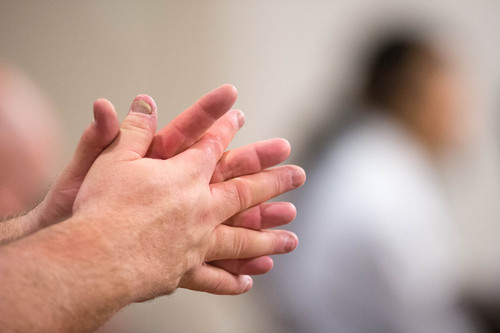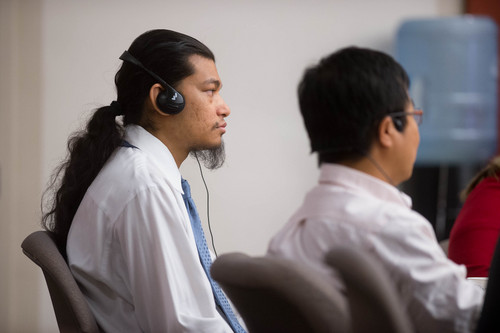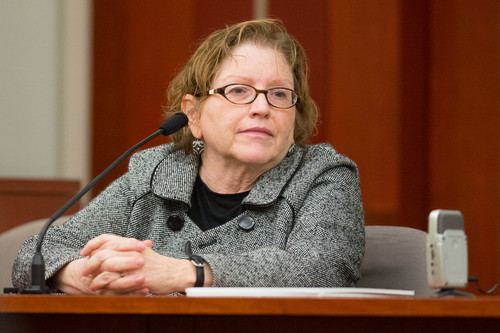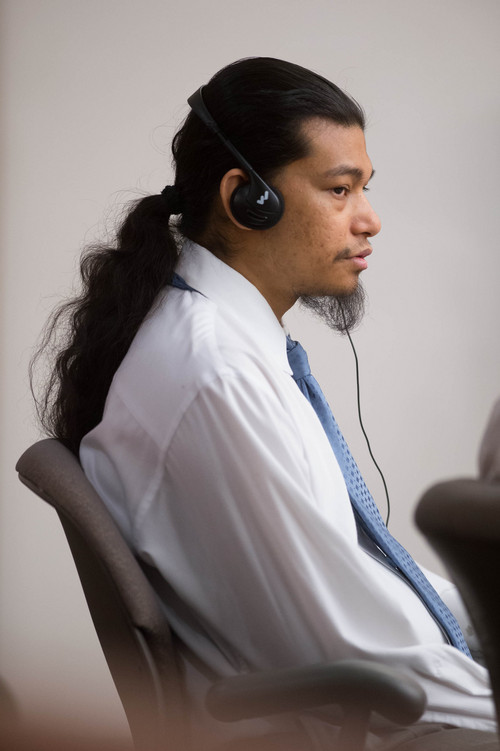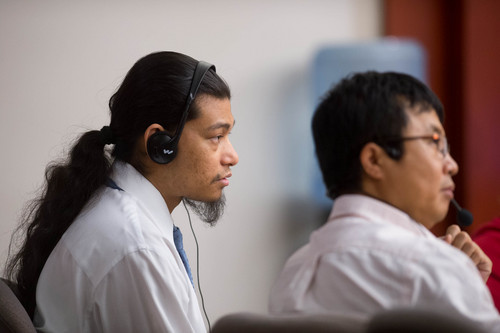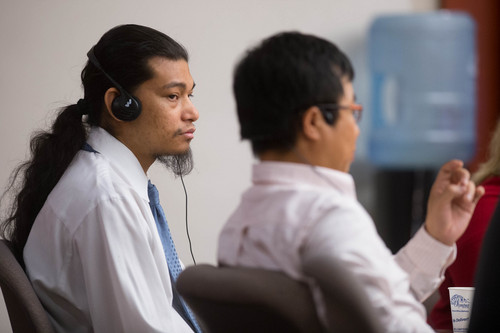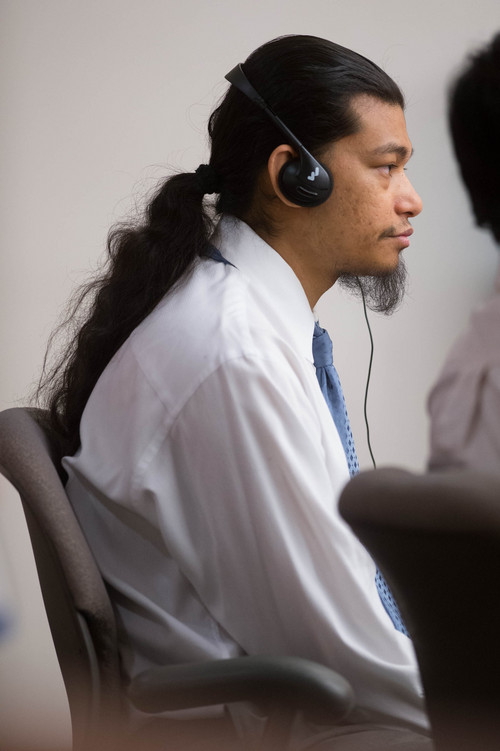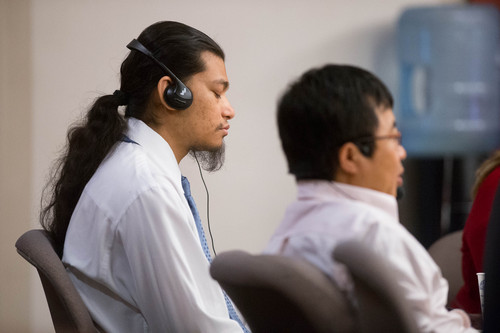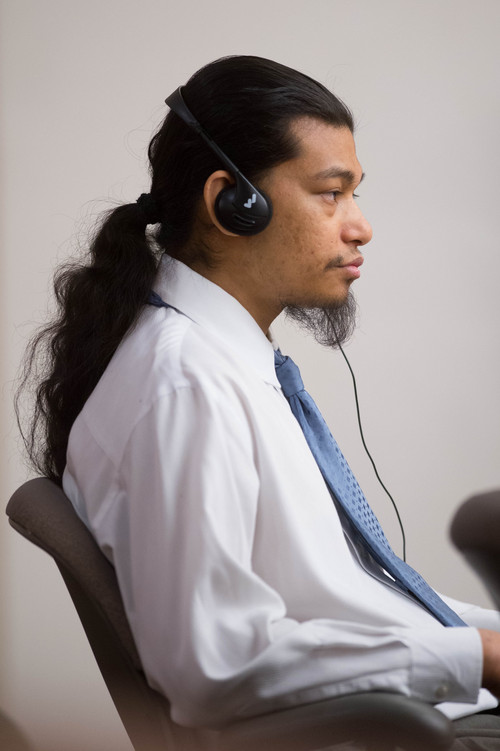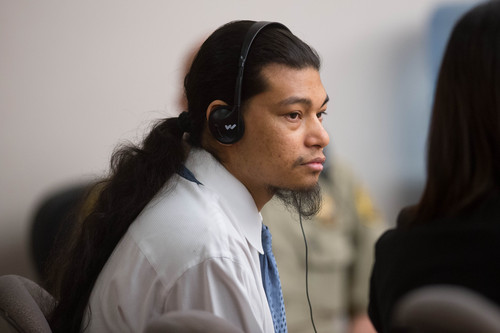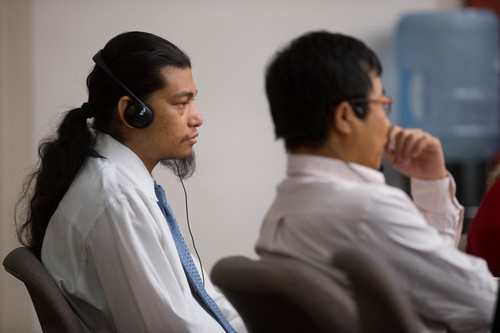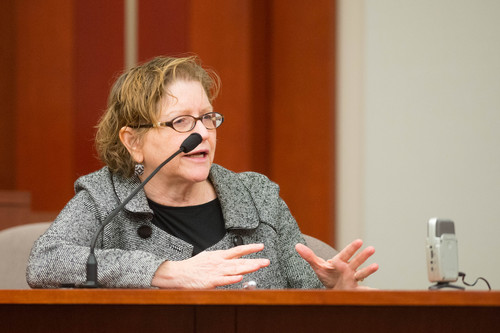This is an archived article that was published on sltrib.com in 2014, and information in the article may be outdated. It is provided only for personal research purposes and may not be reprinted.
On the morning of the day she disappeared, Hser Ner Moo was dancing around her home, bounding up and down the stairs.
She was happy, family members recalled, and healthy.
The lifeless little girl law enforcement agents found beaten and brutalized in the basement of a South Salt Lake apartment the next day was anything but.
A child abuse expert testified Friday that Hser Ner Moo suffered excruciating pain in her last moments alive.
She was bloodied and battered, her body bent and broken. Further investigation revealed numerous internal injuries, including a severely fractured arm, the extent of which the expert said she had rarely seen.
"This would have been terrible pain for her," child abuse expert Lori Frasier testified on the fourth day of a trial against Esar Met, the Burmese refugee charged with the girl's 2008 abduction and murder. "This kind of injury would have required force."
Her testimony Friday focused heavily on injuries to Hser Ner Moo's genitals, which Frasier said were extremely rare and likely caused by forceful penetration.
No DNA evidence suggesting a sexual assault was found at the time of the girl's death, but Frasier testified that doesn't mean one didn't take place.
"It may have been a crime of power rather than a crime of sex," Frasier testified. "There are a number of reasons for DNA not to be present."
Hser Ner Moo's left arm was also severely broken, X-rays revealed.
It was an injury, Frasier said, that would have also caused great amounts of pain and was likely inflicted by another person.
Frasier conducted her examination of the girl on April 2, 2008 — the day after her body had been discovered at the bottom of apartment 472 in the largely refugee community of South Parc.
Defense attorneys questioned Frasier's expertise — noting she specializes in living children and is not licensed to perform autopsy exams.
Esar Met, 27, watched in silence as Frasier testified alongside graphic images of the girl's damaged genitals.
Several people in the courtroom gallery averted their eyes. One man blinked back tears.
Over the course of the afternoon, during which Hser Ner Moo's childhood best friend and her brother took the stand, prosecutors asked pointed questions about what kind of games the children would play with Met.
Nane We, 15, recalled afternoons spent frolicking about the apartment complex with Hser Ner Moo. They would play tag and dig in the sandbox, she said. Sometimes, Met would give them rides on his back, pretending to be an elephant with a long trunk and a waddled walk as the girls giggled with delight.
Nane We testified that Met never hurt her or Hser Ner Moo while they played. They were frequent guests in Met's home — an apartment he shared with four other men — but never entered Met's bedroom if they weren't searching for a place to hide in a game of hide and seek.
Met never removed his clothes in the presence of the girls or "tickled them" inappropriately.
"He took care of us and loved us, just like little sisters," Nane We said through a Burmese interpreter. "He helped me learn how to ride a bike, and he offered to teach Hser Ner Moo, too."
Nane We's older brother, Maung Then Htank, who took the stand after her, said he had known Met from a refugee camp in Thailand where they both lived.
Met had always had an affection for children, Htank said. He was playful and caring and would serve the kids ice cream.
"The girls would be more than happy, they couldn't even wait [to play]," Htank testified through a Burmese interpreter. "When he played elephant, they would fight each other to get onto Esar's back."
Hser Ner Moo disappeared on March 31, 2008, prompting hundreds of volunteers to scour the area for her before police found her body in Met's basement apartment the next night.
Her family, who tearfully testified Wednesday, lived in the same complex.
Her parents didn't know the child was acquainted with Met, who had just arrived in the U.S. a month before the murder.
When Hser Ner Moo's mother, Pearlly Wa, knocked on Nane We's door, frantically searching for her daughter, Nane We said she told the woman that her daughter might be at a nearby apartment where they often played. She did not mention Met by name.
Htank called the defendant later that evening to check whether he had seen the missing girl.
"I called Esar Met because he used to play with her a lot," Htank said. "I thought maybe he took her with him, but he said no, she wasn't there."
That's because, defense attorneys said during opening statements, Met didn't abduct or harm the child.
Met's lawyers have dismissed the DNA evidence the prosecution does have — collected from Met's denim jacket and under the girl's fingernails — as resulting from games the two played days prior to her death.
Defense attorneys implied that one of Met's four roommates may have been responsible for the girl's disappearance and death, pointing to their seemingly indifferent behavior after the child's parents came to their door searching for the missing girl, and a rift between them and Met over ethnic differences.
The roommates were arrested on April 1, 2008, but later released.
Met, who is charged in 3rd District Court with first-degree felony counts of child kidnapping and aggravated murder, could spend the rest of his life behind bars if he's convicted.
He has pleaded not guilty to the charges against him.
Twitter: @Marissa_Jae —
A Missing Peace
Reporter Julia Lyon traveled to Thailand to trace the journeys of Hser Ner Moo and Esar Met from the Mae La refugee camp to Salt Lake City. Her series, reported in collaboration with the International Reporting Project, also explored the challenges their families and other refugees face in America. See the series at http://extras.sltrib.com/thailand.


